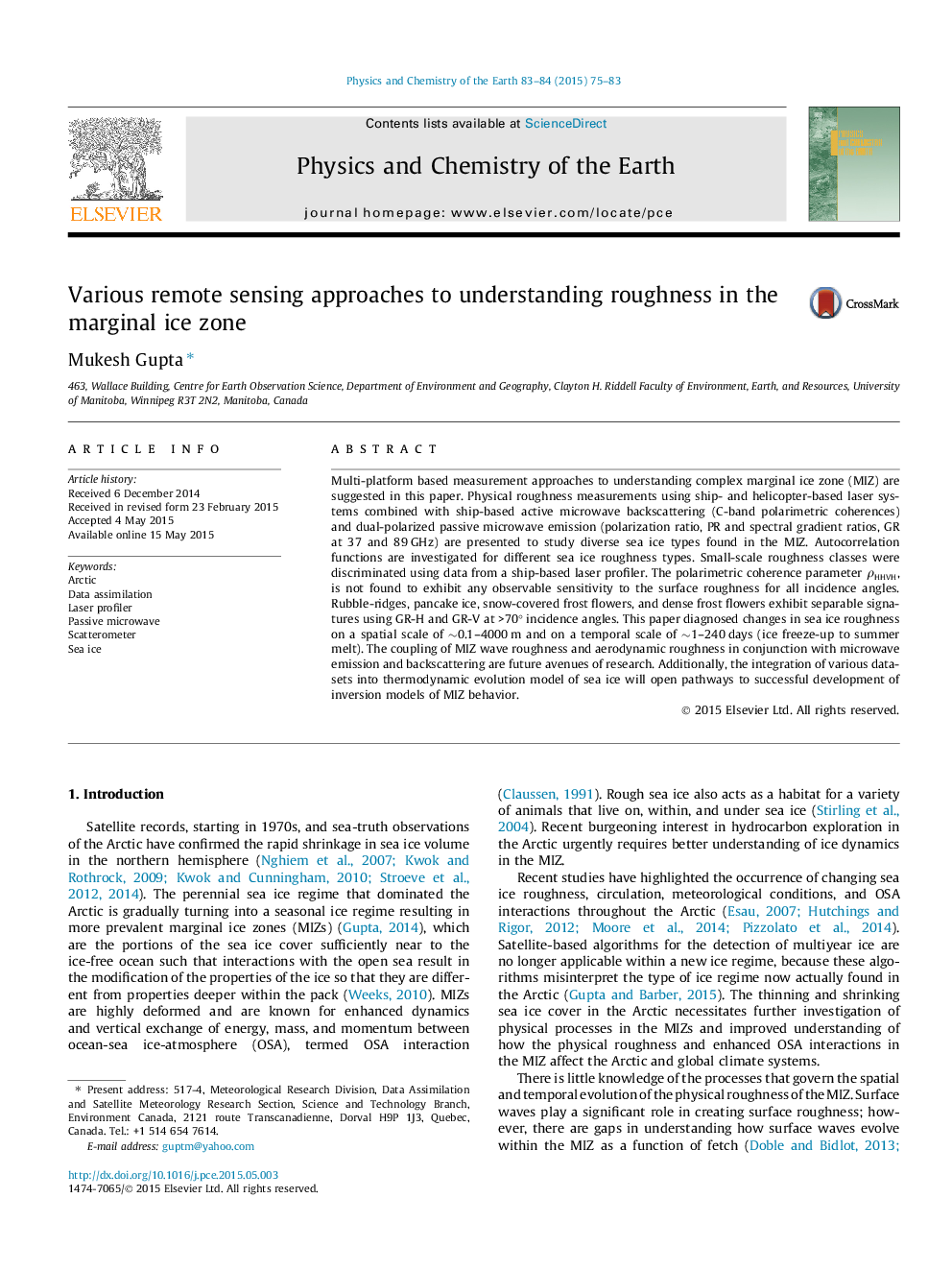| Article ID | Journal | Published Year | Pages | File Type |
|---|---|---|---|---|
| 4720891 | Physics and Chemistry of the Earth, Parts A/B/C | 2015 | 9 Pages |
•Various measurement approaches are essential for understanding MIZ behavior.•Roughness, passive microwave emission, and polarimetric backscattering are presented.•Complex nature of MIZ can be understood by integrating various data into MIZ models.
Multi-platform based measurement approaches to understanding complex marginal ice zone (MIZ) are suggested in this paper. Physical roughness measurements using ship- and helicopter-based laser systems combined with ship-based active microwave backscattering (C-band polarimetric coherences) and dual-polarized passive microwave emission (polarization ratio, PR and spectral gradient ratios, GR at 37 and 89 GHz) are presented to study diverse sea ice types found in the MIZ. Autocorrelation functions are investigated for different sea ice roughness types. Small-scale roughness classes were discriminated using data from a ship-based laser profiler. The polarimetric coherence parameter ρHHVHρHHVH, is not found to exhibit any observable sensitivity to the surface roughness for all incidence angles. Rubble-ridges, pancake ice, snow-covered frost flowers, and dense frost flowers exhibit separable signatures using GR-H and GR-V at >70° incidence angles. This paper diagnosed changes in sea ice roughness on a spatial scale of ∼0.1–4000 m and on a temporal scale of ∼1–240 days (ice freeze-up to summer melt). The coupling of MIZ wave roughness and aerodynamic roughness in conjunction with microwave emission and backscattering are future avenues of research. Additionally, the integration of various datasets into thermodynamic evolution model of sea ice will open pathways to successful development of inversion models of MIZ behavior.
